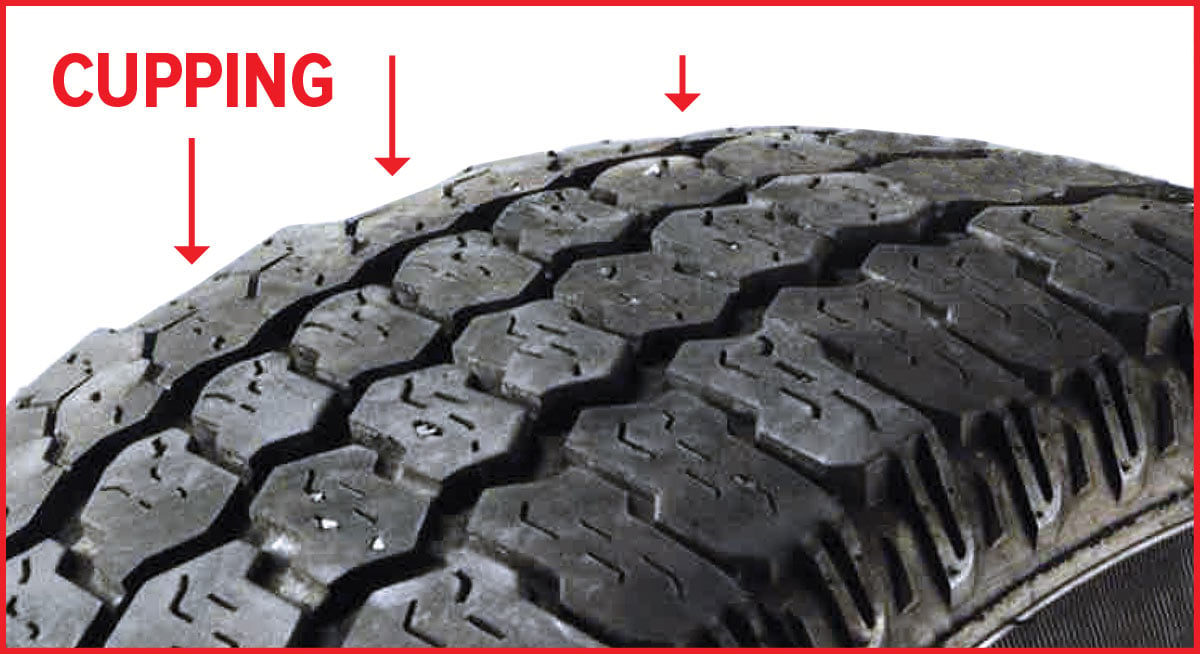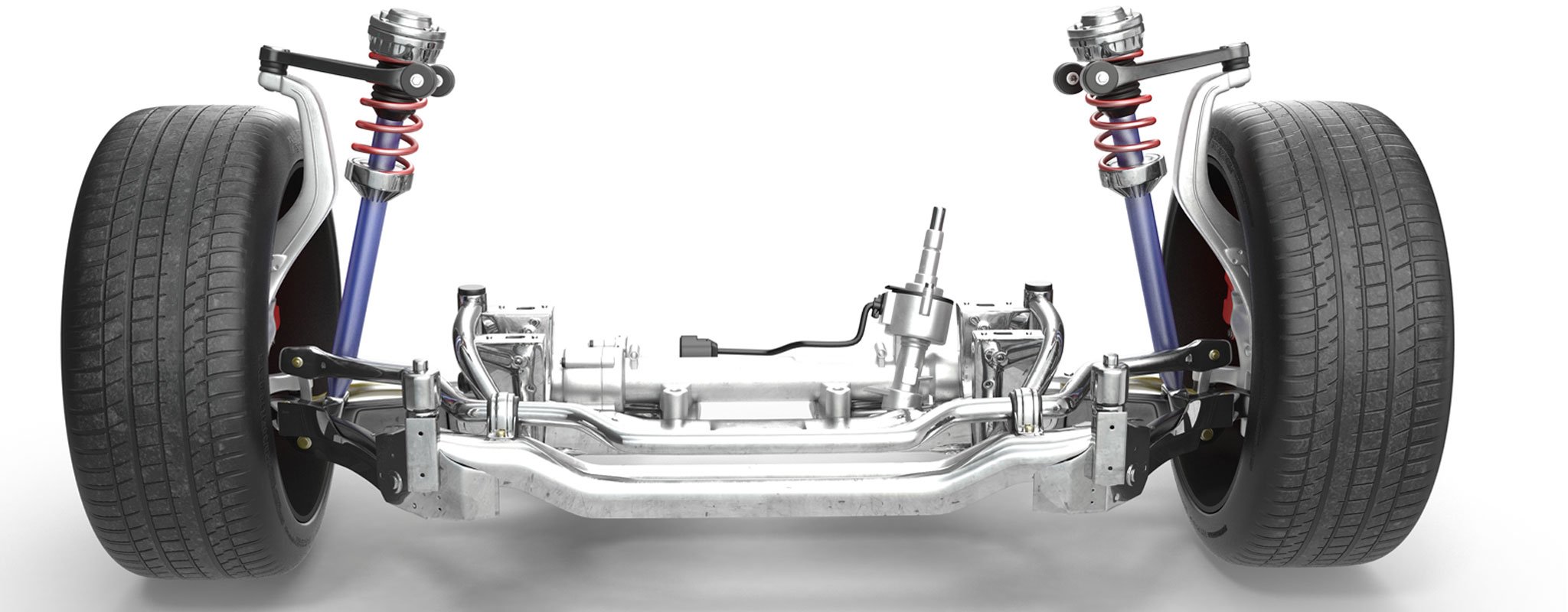How to Tell If Your Shocks or Struts Are Bad
It’s hard to know when to replace shocks and struts. These hard-to-inspect parts often go bad so slowly that you might not notice the reduced ride comfort and road control. Plus, there’s no set time or mileage when aging shocks or struts are due for replacement. Thankfully, there are ways to know when it might be time to get your shocks and struts checked at Les Schwab.
What Are Shocks and Struts?
Every car and truck is suspended by a combination of springs, shocks, and struts. If you look behind any of your four wheels, you’ll see these hard-working parts that move up and down, up to 1,900 times every mile. By the time you put 50,000 miles on your vehicle, your shocks and struts will have done their job 75-million times, working in tandem with your brakes, steering, suspension, tires, and your modern crash-avoidance systems to keep you in control and traveling safely on the road.
What Do Shocks and Struts Do?
Shocks and struts in good condition help your car handle bumps, debris, sudden stops, swerving, potholes, wind gusts or sharp turns. They control the side-to-side, front-to-back and up-and-down shifts of the car’s weight to keep your tires in contact with the road and you in control of your vehicle.
They also:
- Maintain your tire’s contact with the road.
- Prevent your tires and wheels from moving up and down too much.
- Contribute to stability as you accelerate, stop and turn.
- Add to ride comfort by absorbing jolts and bumpiness from irregular road surfaces.
- Help control a vehicle’s body movement (side-to-side roll, bouncing).
- Promote even wear for longer tire life.
Contrary to popular belief, shocks and struts do not typically support your vehicle’s weight or any loads your truck or vehicle might be carrying. The springs do that job. However, worn-out shocks and struts put more strain on the springs as well as other essential suspension parts. Without the control that a good shock or strut provides, these other parts get overworked, causing fatigue and premature wear.
Signs Your Shocks or Struts Are Worn
Properly working shocks and struts add to your safety on the road and help reduce damage to other parts of your vehicle. Look for these signs that indicate it might be time to get your shocks and struts checked and replaced.
Unusual tire wear (including cupping). If you spot cupping (as seen in the image below) or other unusual tire wear you may have issues with your shocks or struts, which is throwing off your alignment. This can be especially important to notice if a rotation was performed but abnormal wear is still occurring.

Cupping is uneven tire wear that looks like hollowed out areas on the tread. Rubber shock covers that are cracking, peeling or off-center. These covers can be found at the top and bottom of the shocks.
Leaking fluid. If you find clear or light brown fluid on the outside of the shocks or struts, it could indicate a broken seal.
Ride issues. If your vehicle dives when braking, bottoms out (scrapes loudly) when going over a speed bump, the rear-end squats when accelerating, or your vehicle bounces more than usual after going over a bump, it could be signs of bad shocks or struts.
Braking issues. You might notice that your vehicle takes longer to stop than usual.
Swaying. This can be especially noticeable after a turn, lane change, or in cross winds.
Unusual noises. As the shocks or struts wear, they can fail to do their job. This can cause many different sounds, including knocking and banging.
See our shock and strut service repair FAQs.
What Will Happen If I Drive on Worn or Damaged Shocks and Struts
It’s important to maintain contact with the road, especially when going over bumps or keeping up with highway traffic. Your vehicle’s suspension system, including shocks and/or struts, is great at that job when every part is working properly.
Over time, those parts will wear out. You might not even notice as it gradually degrades. When they’re not working properly, it can reduce your control and safety. It can also cause added wear to other parts of your vehicle, including your tires.
Replacing worn parts before they get bad can help keep your vehicle’s electronic systems and suspension working properly, extending your vehicle’s life — and keeping you safer on the road.
Shocks and Struts Aren’t Just About a Smooth Ride
Today’s vehicles have highly engineered electronic safety systems (vehicle stability systems, ABS (anti-lock brakes), traction control, collision prevention control and automated braking). These all work together to keep tires in proper contact with the road and provide the most stability.
When you have an unexpected hard stop or swerve, your vehicle’s crash avoidance systems send instant electronic signals to the brakes and other critical components. If ride control parts like shocks and struts are worn, they might not properly respond. Additionally, stopping distances might increase and brakes and tires could wear more quickly. Plus, there could be added strain on the springs.
How Long Do They Last (When Should I Replace Them)?
That all depends on the amount of wear and tear the shocks and struts get, the quality of roads you drive, if you haul heavy loads, and how aggressive you are behind the wheel. That’s why periodic inspections are important.
Get yours checked annually (or 12,000 miles) with every alignment, tire rotation, if you feel any ride-control issues, or anytime you buy new tires.
Les Schwab Can Help
We’re your suspension inspection experts. Our service professionals know what to look for and how to get your car or truck back to its original control and handling. Stop by or schedule an appointment today.
